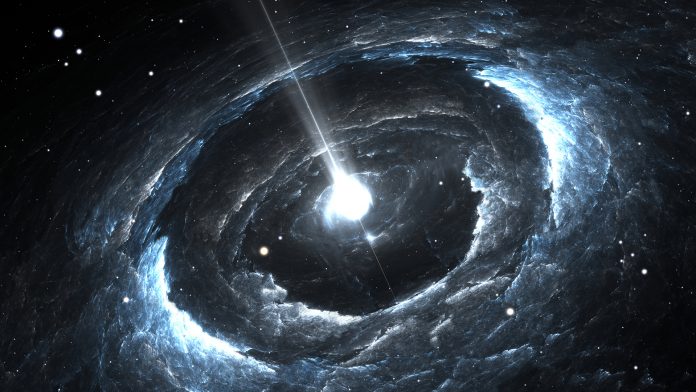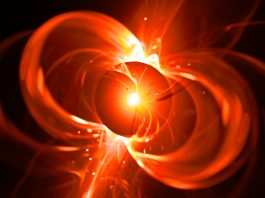A research team from Technische Universität Darmstadt has investigated the interactions in nuclear matter to better understand neutron stars.
Investigating neutron stars: How are they created?
Neutron stars are born in supernova explosions that conclude the life of massive stars. Occasionally neutron stars are constrained in binary systems and eventually collide with each other. These high-energy, astrophysical occurrences feature extreme conditions, and as a result, most of the heavy elements, such as silver and gold, are produced. Thus, neutron stars and their collisions are unique areas to investigate, as the properties of nuclear matter are at densities far beyond the densities inside atomic nuclei.
As a result, scientists have observed that heavy-ion collision experiments conducted with particle accelerators are a complementary approach to producing and probing matter at high densities and under extreme conditions.
“Combining knowledge from nuclear theory, nuclear experiment, and astrophysical observations is essential to shedding light on the properties of neutron-rich matter over the entire density range probed in neutron stars,” explained Sabrina Huth, from the University Darmstadt’s Institute for Nuclear Physics at Technical, and a lead author of the study.
“We find that constraints from collisions of gold ions with particle accelerators show a remarkable consistency with astrophysical observations even though they are obtained with completely different methods,” added Peter T. H. Pang, from Utrecht University’s Institute for Gravitational and Subatomic Physics (GRASP), and a lead author from the study.
Gaining insight into the fundamental interactions in nuclear matter
Multi-messenger astronomy has recently experienced progress in the scientific community. This meant that the international research team, including researchers from Germany, the Netherlands, the US, and Sweden were able to gain new insights into the fundamental interactions in nuclear matter.
This interdisciplinary effort generated information obtained in heavy-ion collisions that were added to a framework combining astronomical observations of electromagnetic signals, measurements of gravitational waves, and high-performance astrophysics computations with theoretical nuclear physics calculations. The research team’s systematic study is the first to combine all these individual disciplines, suggesting a higher pressure at intermediate densities in neutron stars.
Scientists considered the information from the gold-ion collision experiments performed at GSI Helmholtzzentrum für Schwerionenforschung in Darmstadt, the Brookhaven National Laboratory, and Lawrence Berkeley National Laboratory in the USA in their multi-step procedure that analyses constraints from nuclear theory and astrophysical observations. This included the consideration of neutron star mass measurements through radio observations, information from the Neutron Star Interior Composition Explorer (NICER) mission on the International Space Station (ISS), and multi-messenger observations of binary neutron star mergers.
Data of heavy-ion collisions enables additional constraints in the density region
Including data of heavy-ion collisions in the analyses has enabled additional constraints in the density region where nuclear theory and astrophysical observations are less sensitive. This meant that scientists were able to ascertain a more complete and complex understanding of dense matter.
Researchers expect that improved constraints from heavy-ion collisions in the coming years can play an important role in bridging nuclear theory and astrophysical observations by supplying complementary information. This will be particularly relevant in experiments that probe higher densities while reducing the experimental uncertainties, thus providing a great potential to provide new constraints for neutron star properties. Additionally, scientists have noted that this new information can easily be included in the framework to further improve the understanding of dense matter in the coming years.









